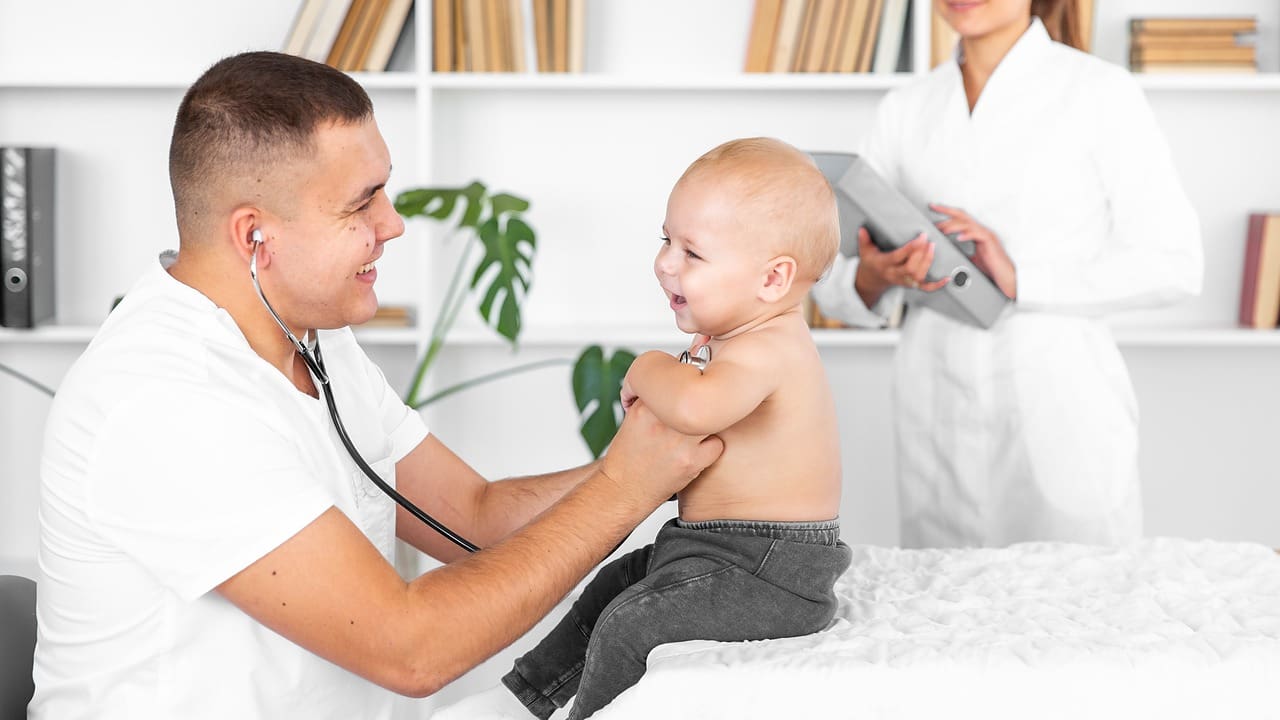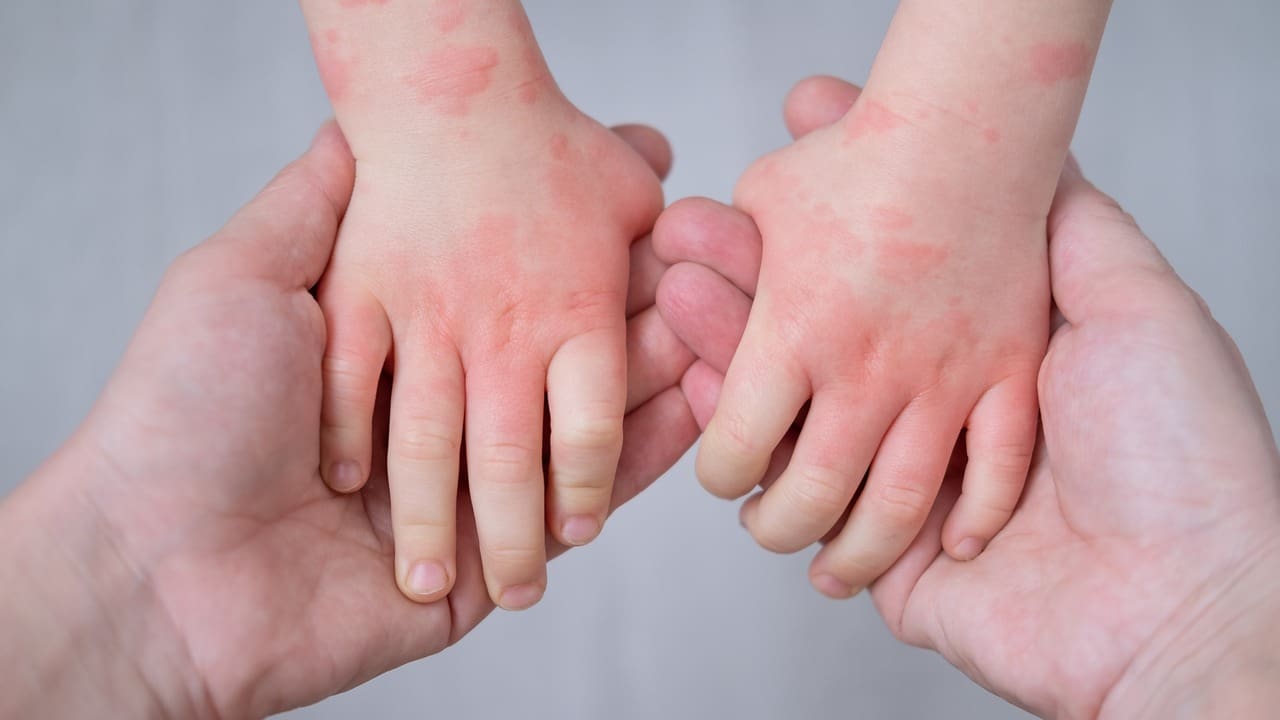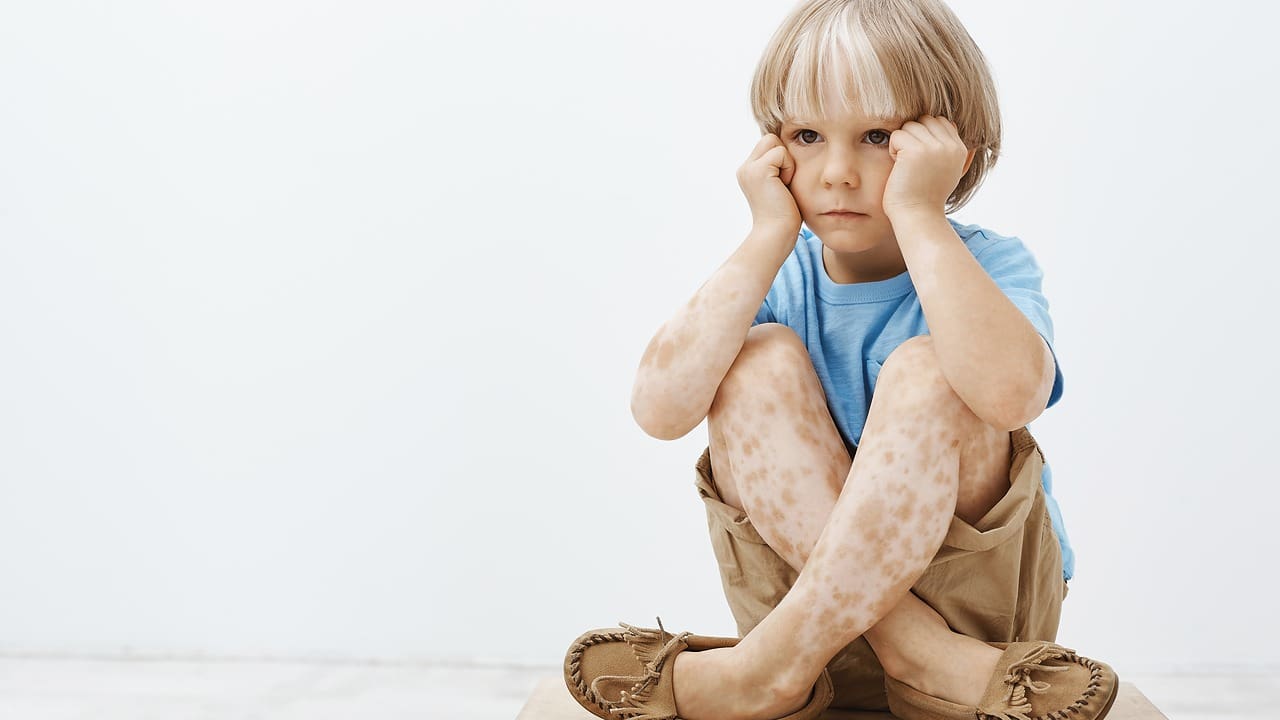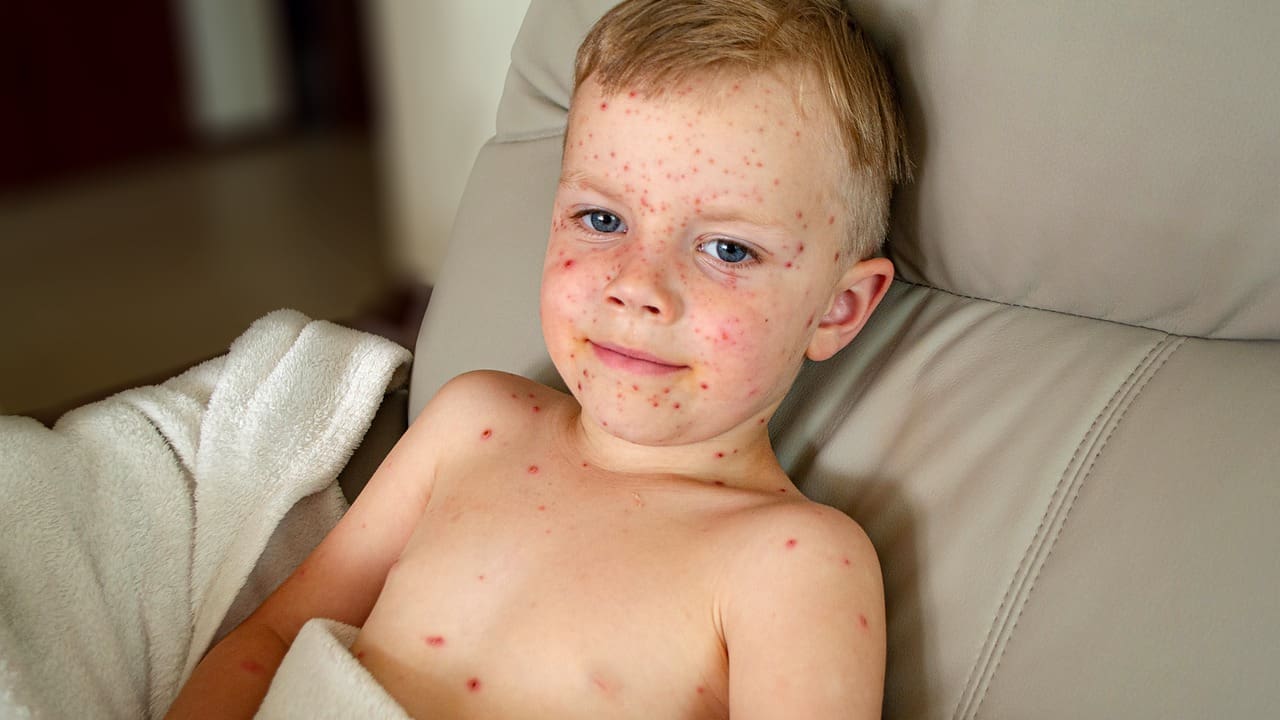Pediatric Dermatology: Conditions, Treatments, and When to See a Specialist
Pediatric dermatology focuses on caring for the skin, hair, and nails of babies, children, and teens. Because kids have thinner, more sensitive skin than adults, they may react differently to irritation or infection. If your child has a stubborn rash, itchy areas, acne, birthmarks, or unusual moles, a pediatric dermatologist can offer gentle, age appropriate care.
Parents often search for pediatric dermatology near me when symptoms are new or getting worse.

Pediatric Dermatology Near Me: How to Choose the Right Clinic for Your Child
Choosing the right pediatric dermatology clinic can really help your child feel comfortable and get the best care. Here are a few things to consider:
- Experience with children: Select clinics that routinely manage pediatric eczema, acne, birthmarks, molluscum contagiosum, warts, psoriasis, impetigo, ringworm, and diaper rash.
- Child friendly environment: Find a clinic that uses comfort measures, distraction techniques, and numbing creams for minor procedures. Calm and supportive communication is also important.
- Comprehensive services: Choose a clinic that provides checkups, diagnosis, allergy patch testing, in office treatments for conditions like molluscum or warts, and minor skin procedures. Getting all these services in one place can save you time and extra trips.
- Access and convenience: Think about how easy it is to reach the clinic, if parking is available, how quickly you can get an appointment, and whether video visits are offered for follow ups. These details can help busy families.
- Parent education: Pick a clinic that explains aftercare clearly, offers easy to follow skincare plans, and provides ongoing support. This can help you feel more confident caring for your child’s skin, especially with long term conditions.
Common Pediatric Dermatological Conditions Parents Should Know
Children can experience a variety of skin problems. Learning the basics can help you notice issues early and get the right care when needed:
Atopic dermatitis (pediatric eczema): Dry, itchy, inflamed skin that flares with triggers like fragrance, harsh soaps, wool, overheating, dry air, and allergens.

Acne: Clogged pores and inflammation are common in preteens and teens; gentle routines and non comedogenic products reduce irritation.
Molluscum contagiosum: Small, smooth bumps caused by a virus; often self limited but can spread or itch.
Warts: Viral bumps on the hands, feet (plantar warts), or around the nails; some resolve with home care, others require in office treatment.
Psoriasis: Well defined scaly plaques on the scalp, elbows, knees, or folds; may itch or crack and impact daily comfort.
Impetigo: Bacterial infection with honey colored crusts, often around the nose and mouth, frequently overlaying irritated skin.
Ringworm (tinea): Fungal infections on the body or scalp; scalp ringworm (tinea capitis) needs prompt evaluation.
Birthmarks and vascular lesions: Hemangiomas, port wine stains, and café-au-lait macules; monitoring or treatment depends on location, size, and symptoms.
Diaper dermatitis: Irritant diaper rash that can be complicated by yeast (candida).
Seborrheic dermatitis (cradle cap): Scaly patches on the infant's scalp and eyebrows.
Pediatric Dermatology Eczema (Atopic Dermatitis): Symptoms, Triggers, and Daily Care
Symptoms can vary depending on your child’s age. Babies often have rough, red patches on their cheeks and scalp. Older children usually get itchy spots in the bends of their elbows and knees, or on their wrists and ankles. Scratching may cause the skin to ooze or form a crust during flare ups.
Common triggers include scented products, harsh soaps, wool clothing, overheating, dry winter air, and sometimes allergies. Daily care is the most important step:
- Gentle cleansing: Use lukewarm water and fragrance free, soap free cleansers once daily or every other day.
- Moisturize: Apply a thick, fragrance free ointment or cream within three minutes after bathing to “soak and seal.” Reapply to dry areas at least twice daily.
- Trigger avoidance: Choose cotton clothing, rinse laundry thoroughly, and skip perfumed products.
- Flare plans: Your child’s dermatologist can make a plan for short, safe treatments during flare ups and routines to help prevent them from returning.
- Itch control: Keep your child’s nails trimmed, use cool washcloths on itchy areas, and try calming bedtime routines. If itching makes it hard for your child to sleep, talk to your doctor about adjusting the care plan.
- Infection prevention: Infections like impetigo can sometimes develop on top of eczema, especially if the skin is broken. If you see crusting or oozing, contact your doctor for the right treatment.
Pediatric Dermatology Acne: Causes, Safe Treatments, and When to Get Help
Acne is caused by excess oil, clogged pores, skin bacteria, and inflammation. Hormone changes in preteens and teens can make it worse. Wearing masks, sports gear, or using heavy skincare or makeup can also cause more breakouts.
Home care and safe treatments include:
- Gentle cleansing: Wash twice daily with a mild, fragrance free cleanser; avoid scrubbing.
- Non comedogenic products: Choose oil free moisturizers and sunscreens.
- Avoid picking: Reduces scarring and dark marks.
Smart routines: Treatments work best when used on all areas with acne, not just individual spots. Start new products like retinoids or benzoyl peroxide slowly to avoid irritation. If your child has painful or deep pimples, early scarring, dark spots, acne that affects their confidence, or breakouts that don’t improve with store bought products, see a pediatric dermatologist. They can create a plan that fits your child’s needs.
Birthmarks and Vascular Lesions in Children: Hemangiomas, Port-Wine Stains, and More
Infantile hemangiomas often appear in the first few weeks after birth, grow for a few months, and then slowly shrink over time. Whether your child needs treatment depends on the birthmark’s location, size, and growth rate. Birthmarks near the eyes, lips, nose, or diaper area can cause more problems and should be checked closely by your doctor.
Port-wine stains are flat, pink to purple capillary birthmarks that may deepen in color. Early evaluation helps parents understand long-term care options and realistic goals.
Café-au-lait spots are light brown patches that are usually not a problem. If your child has several of them, it’s a good idea to check with a pediatric dermatologist for advice.
Make an appointment if a birthmark changes quickly, starts to bleed or form sores, or gets in the way of your child’s feeding, vision, or breathing.

Molluscum Contagiosum and Warts in Children: What Works and What to Avoid
Molluscum contagiosum looks like small, smooth, flesh colored bumps with a central dip. These usually go away within a few months but can itch or spread, especially if scratched. Gentle in office treatments or supportive skincare may help reduce irritation. Avoid picking to prevent spreading and scarring. Using moisturizers and controlling itch can help minimize scratching.
Warts can show up on the hands, feet (called plantar warts), or around the nails. Some kids get relief with over the counter treatments like salicylic acid or gentle filing. If warts hurt, keep spreading, or don’t go away, your doctor can offer other treatments. Keeping feet clean and wearing shoes in public places can help prevent plantar warts.
Pediatric Dermatology Psoriasis: Signs, Gentle Skincare, and Modern Therapies
Psoriasis causes pink or red patches with silvery scales. On the scalp, it can form thick scales, while patches on elbows, knees, or skin folds may itch and crack. Using gentle daily moisturizers helps protect the skin. A dermatologist can guide you on safely removing scales. Triggers such as infections, friction, and minor injuries can make psoriasis worse, so having a personalized plan is important. Pediatric dermatology care focuses on easing symptoms, improving comfort, and supporting daily routines.
Infant and Toddler Rashes: Diaper Rash, Cradle Cap, and Heat Rash Guidance
To help prevent diaper rash, change diapers often, use gentle wipes or just water, let your baby’s skin air dry, and apply a thick layer of zinc oxide cream. If the rash becomes bright red with small bumps nearby, it might be a yeast infection, so check with your doctor for the right treatment.
Cradle cap appears as soft, greasy flakes on your baby’s scalp or eyebrows and usually doesn’t itch. Washing gently with baby shampoo and using moisturizers can help. Avoid scraping off the scales. If the cradle cap is thick or doesn’t go away, ask your pediatric dermatologist for more options.
Heat rash shows up as small red bumps, often during hot, humid weather. Help your child stay cool and dry by dressing them in loose cotton clothes and giving lukewarm baths. If the rash is painful, oozes, or is accompanied by a fever, contact your doctor.
Pediatric Dermatology Skin Infections: Impetigo, Ringworm, and When Antibiotics Are Needed

Impetigo causes yellowish crusts, often around the nose and mouth or on irritated skin. Washing gently and seeing your doctor can help clear the infection and prevent it from spreading to others at home or school.
Ringworm (tinea) can affect the body and scalp. Body ringworm typically presents as circular, scaly patches with clearer centers and often responds to topical antifungals. Scalp ringworm (tinea capitis) appears as scaly patches with broken hairs and tender nodes and requires prompt evaluation for appropriate therapy.
Other infections can include perioral dermatitis, which causes small bumps around the mouth or nose, and folliculitis, which is inflamed hair follicles from friction or bacteria. Gentle skincare, good hygiene, and advice from your doctor can help your child recover.
Pediatric Dermatology Emergency Signs: When to Seek Immediate Care

Seek urgent care or an emergency evaluation if your child has:
- A rapidly spreading, painful rash with fever or blisters
- Swelling of lips or tongue, or difficulty breathing, with a skin reaction
- Signs of spreading infection (rapid redness, warmth, streaking, high fever)
- Painful blistering or skin peeling
- Purple spots that do not blanch when pressed
Pediatric Dermatology : Sun Safety for Kids

Protecting your child from the sun helps prevent sunburns and lowers their risk of skin cancer later in life. Use a water-resistant, broad spectrum sunscreen with SPF 30 or higher, and reapply every two hours or after swimming or sweating. Mineral sunscreens with zinc oxide or titanium dioxide are usually gentle on sensitive skin. Dress your child in sun-protective clothing, hats, and sunglasses, and try to stay in the shade during the middle of the day.
Keep an eye on your child’s moles for any changes in size, shape, color, or if they start to itch or bleed. If you notice anything unusual, make an appointment with a pediatric dermatologist. Teaching your child about sun safety now can help them build lifelong good habits.
Liv Hospital Pediatric Dermatology Clinic
Frequently Asked Questions for Pediatric Dermatology
How often do children need follow up visits?
Follow up frequency depends on severity and response. Chronic conditions such as eczema or psoriasis may need closer early follow up, then maintenance visits to prevent flares and adjust care as your child grows.
Do children need patch testing for contact dermatitis?
If recurring rashes suggest triggers such as fragrance, nickel, or preservatives, patch testing can identify the culprits to avoid. Your clinician will advise if it’s appropriate.
What can I do to prevent diaper rash?
Change diapers frequently, cleanse with water or gentle wipes, allow to air dry, and apply a thick zinc oxide barrier cream. If the rash turns beefy red with satellite bumps, contact your clinician for guidance on yeast specific treatment.
What is ringworm (tinea) and how is it treated?
Ringworm is a fungal infection. Body ringworm causes ring shaped, scaly patches and often responds to topical antifungals. Scalp ringworm (tinea capitis) presents with scaly patches and broken hairs and needs prompt evaluation for appropriate therapy.
How can I protect my child’s skin from the sun?
Use broad spectrum SPF 30+ sunscreen, reapply every two hours and after water exposure, choose mineral formulas for sensitive skin, dress in UPF clothing and hats, and seek shade between 10 a.m. and 4 p.m. Monitor moles and book evaluations for changes.